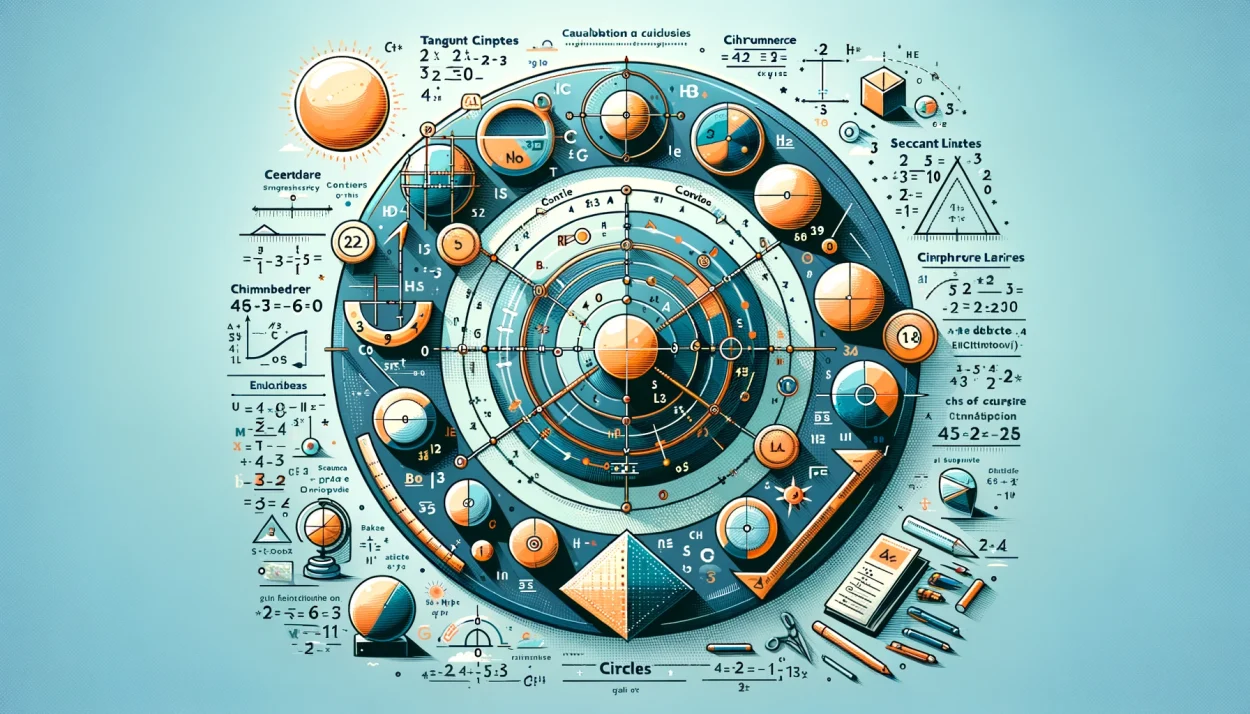
Mastering Circles: A Comprehensive Guide for Class 10 Mathematics

Introduction:
Circles are one of the fundamental shapes in geometry, encompassing a wide range of properties and theorems that are crucial for Class 10 students. This topic delves into the understanding of circles, their equations, and various theorems related to tangents, chords, and sectors, which are essential for solving complex geometric problems.
Understanding Circles:
A circle is defined as a set of points in a plane that are all at a fixed distance (radius) from a fixed point (center). The study of circles in Class 10 focuses on deepening the understanding of their geometric properties and applying this knowledge to solve problems.
Key Concepts:
- Radius and Diameter: The radius is a line segment from the center of the circle to any point on the circle. The diameter is twice the radius and passes through the center.
- Circumference and Area: The circumference is the perimeter of the circle, calculated as (2\pi r), and the area is given by (\pi r^2).
- Arcs and Sectors: An arc is a part of the circumference, and a sector is the area enclosed by two radii and an arc.
- Tangent and Secant: A tangent is a line that touches the circle at exactly one point, while a secant is a line that intersects the circle at two points.
- Theorems: Various theorems describe the properties of angles and segments in circles, including the angle subtended by an arc at the center and at any point on the circumference.
Applications in Real Life:
The concepts of circles find applications in numerous fields, such as engineering, architecture, and astronomy. For example, understanding the properties of circles is essential in designing wheels, gears, and circular structures.
Examples:
- Calculating the Area of a Circular Garden: To plan a circular garden with a radius of 10 meters, use the area formula to determine how much space the garden will occupy.
- Designing a Wheel: Engineers use the circumference formula to design wheels that are perfectly circular, ensuring smooth motion.
Challenges and Tips for Mastering Circles:
- Practice drawing circles and identifying parts of a circle, including chords, arcs, and sectors.
- Solve problems involving the calculations of areas and perimeters of circles and sectors to strengthen your understanding.
- Explore real-life problems that involve circles, such as calculating distances around circular tracks or designing circular objects.
Conclusion:
Circles are a pivotal part of Class 10 mathematics, offering students the opportunity to explore a wide range of geometric properties and applications. Mastering this topic not only enhances students’ geometric understanding but also equips them with the skills to tackle real-world problems involving circular shapes.